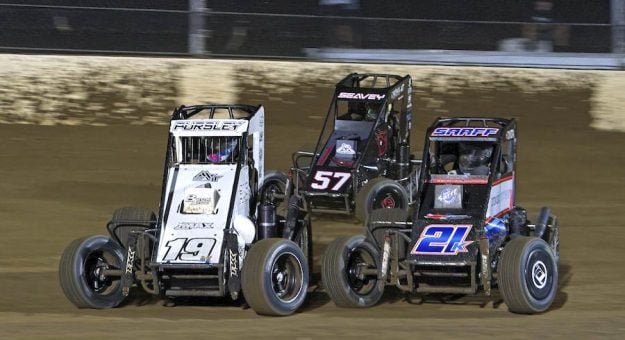INDIANAPOLIS — I’m not sure I ever saw a bad driver win a race. I mean, a really bad driver.
I’m not talking about the guy you can’t stand, the driver you dislike so much that every time he runs in the top five, you moan to your buddies about how awful he is. Let’s face it, that guy is a pretty decent shoe, or he wouldn’t be running up front.
I’m saying that I can’t remember ever watching a victory lane ceremony and wondering how in the world that no-talent so-and-so ended up holding the trophy.
What brings this to mind is a comment we’ve all heard for at least a couple of decades: that racing is all about money, and that talent doesn’t matter anymore.
It’s true that everything costs more than it used to, and it’s a sad fact of life that the top division at many weekly tracks is out of reach for the blue-collar racer. I’m old enough to remember a time when it seemed as if every third gas station had a stock car in one of its service bays. Today, you can hardly find a station with service bays, let alone the race car.
And I can name a few champions who learned grassroots engineering while growing up on the family farm, but the days of a farm kid piecing together a car that puts him on the road to regional stardom are as dead as last year’s crop. Today, most new team owners I meet own healthy businesses, and many either drive the car themselves or stick their sons and daughters in the seat.
And there’s no denying that because the latest technology is available to anyone — just pick up the phone — even a raw rookie has access to top-shelf equipment. His chassis builder will provide him with a setup for his home track that at least puts him in the ballpark, so the natural edge once enjoyed by mechanical Einsteins such as Karl Kinser and Ed Howe is not as wide as it used to be.
But it still takes talent to win. You don’t see well-off, middle-aged dilettantes and no-talent rich kids in the headlines and the victory lane photos. Racing remains a meritocracy. You don’t fluke your way into a win, whether you’re at the Indianapolis Motor Speedway or the Indianapolis Speedrome, Nashville Superspeedway or the Nashville Fairgrounds, Road America or Lake Ozark Speedway.
Everybody ranks drivers differently. I’ve always broken them into five categories: Great, Very Good, Good, Mediocre and No-Hopers. And I can’t recall ever seeing a No-Hoper go home with the winning payoff.
I came of age at an amazing intersection of time and place: New England in particular, the Northeast in general, in the second half of the ’70s and the first half of the ’80s. It was a golden age for asphalt modifieds, the first race cars I fell in love with. Every spring and fall, I was off to special events at Martinsville (Va.) Speedway or to the Race of Champions at Trenton (N.J), or Pocono Raceway in Pennsylvania, where it was not uncommon for 100 cars to fill the pit area.
But the best modified racing happened in the weekly shows. Every track in the area used some sort of handicapping system to line up its features. The most common was a money-won formula; the driver who’d earned the most over the last three weeks would start 18th, with the next-highest earner starting 17th, and so on. Watching Geoff Bodine and Fred DeSarro share the ninth row of the grid and carve their way through the pack in 30-lappers at Connecticut’s Thompson Speedway gave me memories that still linger.
Ditto for the regular 50-lappers at tight bullrings such as Riverside Park in Massachusetts, where giants including Reggie Ruggiero, Mike Stefanik and Richie Evans fought to keep one another other at bay while trying to navigate their way past, oh, 15 other cars. It was electrifying, and I got to see that stuff three or four nights a week.
Once in a while under this system, when traffic held up the Greats, a Very Good driver starting 12th might grab a victory. There were also weeks when a three-week stretch of bad luck would give a Good driver a decent starting spot, so he’d get to the front early and stay there. Occasionally, if a race went green-to-checker with no restarts, or if rain shut things down on lap 18 of a 30-lap feature, a Mediocre driver might convert his second-row start into a win, and everybody in the joint would be happy for him. But a No-Hoper in victory lane? If it happened, I must not have been there.
It’s the same today with a sprint car feature, or a USAC national midget meet. Those races generally invert the fastest six or eight qualifiers, and there are nights when a Very Good or merely Good driver has the right setup and wins from the front row. But that rarely happens with a Mediocre driver, and as sure as God invented red clay, any No-Hoper who starts up front is not going stay there.
The best guy doesn’t always win. The worst guy doesn’t win, period. And that is as it should be.
Here’s the lowdown for any would-be racer dreaming of stardom: This sport costs money, and unless you have a heavy wallet, someone — a family member or a sponsor — is going to have to pay the freight. But if you’ve got the magic, that special something separating the Greats from the rest, you can still make it happen.
